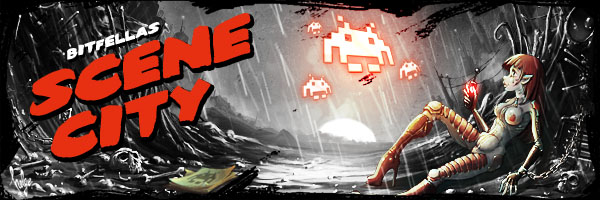Interview with Paul Debevec
by Axel of Brainstorm
Paul Debevec can easily be regarded as one of the most influential visionaries and researchers when it comes to computer graphics. His theories, algorithms and findings have had and still have a major impact on programmers of the demoscene and beyond. His work on image-based lighting and HDR techniques in particular have resonated around the scene, heavily influencing the look of demos like 195/95 by Plastic, and the light probes he created are still widely used today.
Debevec is Associate Director in graphics research and Research Ascociate Professor at the USC ICT Graphics Lab and also heads the Computer Animation Theater at SIGGRAPH as Chairman. Reason enough for ZINE to get in touch, sit down and discuss the current state of realtime computer graphics.
Good memories
When reflecting on the early days of computer graphics, Debevec's thoughts are drifting. "I remember being amazed by the demos that I was able to download (at 300 baud) on my C64 because they were things that were theoretically impossible to do with the computer", remembers Debevec. "Showing more than 8 sprites, drawing in the borders of the screen, using more colors together than the video chip could support, and producing animations that just shouldn't be able to be computed at only 1MHz on the 6510, demos were like seeing new colors in the rainbow. And the music was usually very compelling as well."
Most "demoscene productions" were made in Europe at that time, and this hasn't changed to date. Explanations for this phenomenon are manifold. "I think the C64 was quite popular here but the Amiga was indeed less so", comments Debevec. "I think that Europe has a richer artistic tradition than the US and that this affects even how young computer hackers apply their creative energy. I spent a year living in Europe when I was nine years old and that opened my eyes to many great art museums. Lots of the demoscene material has relationships with Dali and Bosch and abstract modern art."
Real-time graphics on the fast lane
Ever since the days of the post-C64 era, computer graphics have progressed in quantum leaps. "It's absolutely amazing what's possible now - we're so lucky to have had a steady supply of groundbreaking computer graphics research in the SIGGRAPH conference and so many artists and technicians in the visual effects and games industries pushing the technology past its limits, inspiring the next research. We're particularly luck that there's been such healthy competition between ATI and nVIDIA to supply us with the best graphics cards - this has resulted in performance increases that beat even Moore's law. I was amazed that some of the research I was doing in the late 1990's was running in real time on consumer graphics cards by the early 2000's."
ZINE took the liberty to present some of today's visually most appealing demos to Paul Debevec and discussed pieces like ASD's Animal Attraction, Fairlight's Track One and MFX' Deities. "These are cool and beautiful animations - and it's amazing what the artists have been able to accomplish in real-time rendering. I am particularly impressed with the 64K intros, such as Conspiracy's Chaos Theory, because it's amazing to imagine that you can pack a whole high-definition abstract film with extremely cool visuals and a great music track into what is today an infinitessimal amount of space. It makes you question why every program you download these days is a few megabytes at least..."
While prerendered CG imagery was easily distinguishable from real-time graphics ten years ago, the thin line between prerendered visuals and real-time graphics is increasingly blurry. Debevec agrees: "I think that the gap is closing - the main difference is that with offline rendering you can get full Global Illumination solutions whereas with real-time you have to make major approximations to how light works. But image-based and precomputation techniques are helping the real-time work catch up."
Going beyond the limits
One of the industries that continues to push real-time graphics to the edge is the industry of computer- and videogames. "I remember being surprised hearing seven years ago that Maya was going to target videogame content creation as one of its markets, but that seems very natural now. There is definitely a lot of convergence and it makes perfect sense now that there are fewer compromises required for real-time."
Fewer compromises automatically lead to more creative freedom - one of the strongest foundations of the demoscene. "We're now in a place where anything that can be imagined can be created. It may still be somewhat expensive but really, it seems like anything is possible now."
The CG industry isn't without challenges though, one of which still being the human person. "I think the biggest challenge is digital humans that both look and act real. We can create photoreal CG human models now, but making them do things takes an enormous amount of effort to do it well. It would be an incredible tool to be able to have a library of digital characters that you could direct at a high level - almost like a director works with real actors. This will require an amazing combination of rendering, physical dynamics, and artificial intelligence when it happens."
When. Not if.
BitJam
Search BitFellas
Scene City

content search
breadcrumb
14 - SIGGRAPH: An interview with Paul Debevec
Please log in to post comments, if you are not registered please sign up now
Render time: 0.6708 sec, 0.5585 of that for queries. DB queries: 78. Memory Usage: 1,163kb



